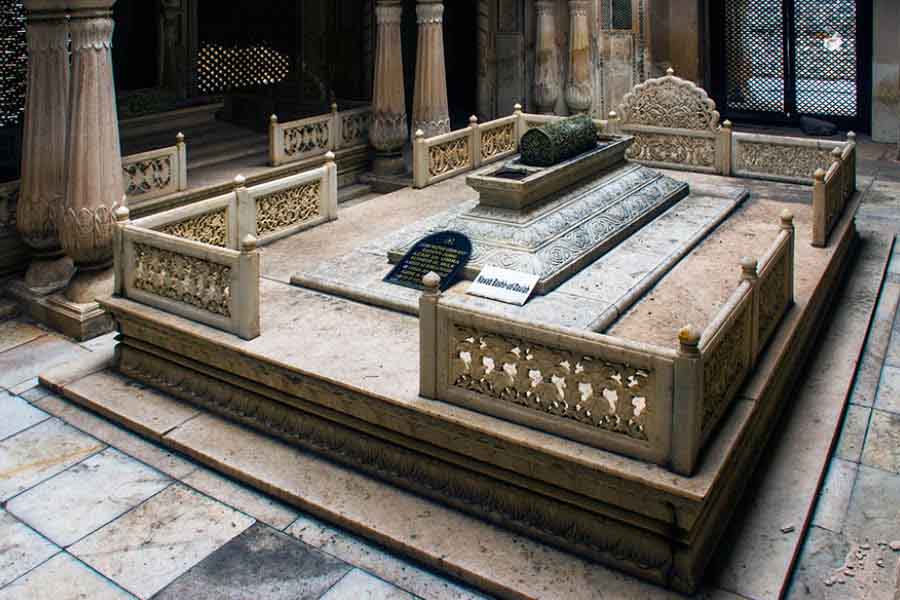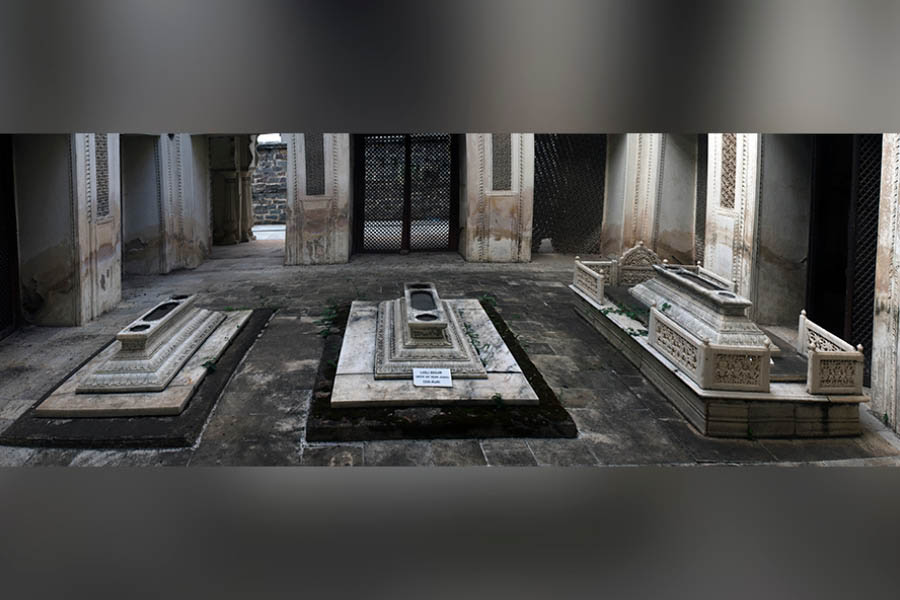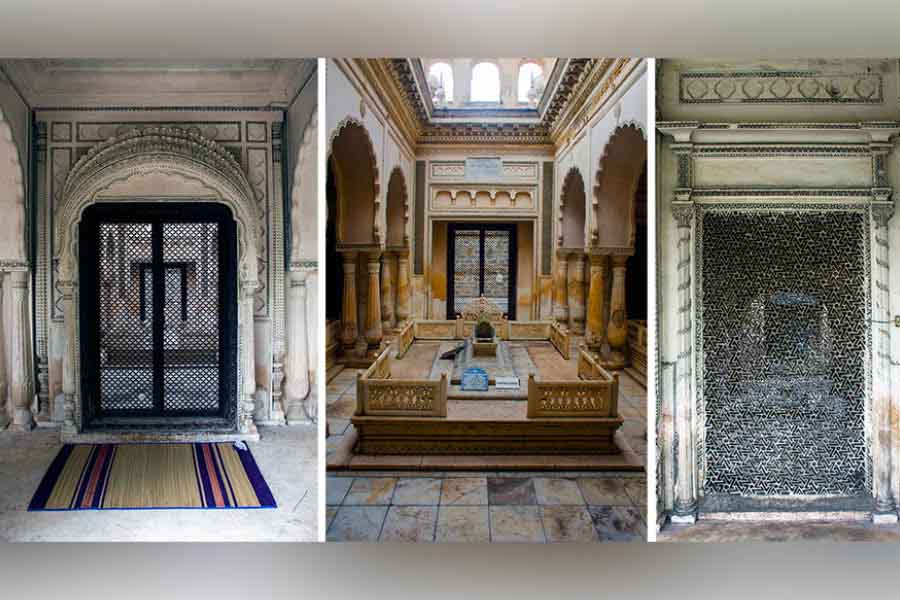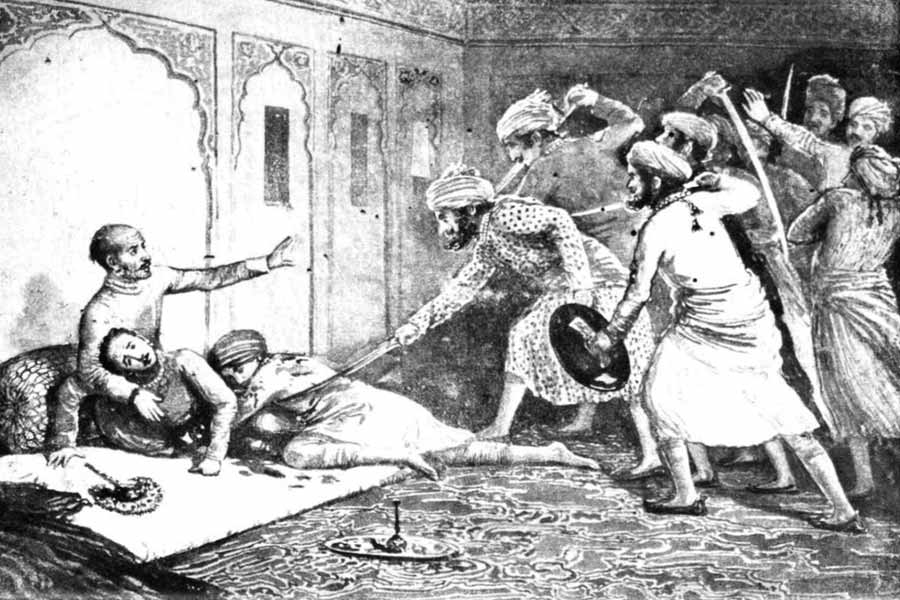About 4km east of Charminar, Hyderabad’s most famous landmark, lies a cemetery with some spectacular tombs housing the mortal remains of several generations of the legendary Paigah family.
The Paigahs
The Paigahs were the most influential aristocrats of the erstwhile princely state of Hyderabad, second only to the Nizams. The family maintained its own court, individual palaces and a standing army of about 14,000 infantry and cavalry troops. Many of the Paigah nobles married daughters of the Nizam’s family and thus were connected by marriage. The word ‘Paigah’ is of Persian origin and means pomp and rank and it was a title given by the second Nizam to the first Paigah noble, Abdul Fateh Khan. The Paigah nobility continued till Hyderabad was annexed to the Indian Union in 1948.
Paigah tombs

The Paigah tomb complex complete with cusped arches supported by slender pillars
After the death of Abdul Fateh Khan, the first Paigah noble, he was laid to rest next to the dargah of Sufi saint Burhane Shah. His descendants turned the area into a large necropolis of stunning tombs. The tradition continued for over a century and a half and the cemetery became home to several graves of the Paigah family and their spouses, many of whom came from the Nizam’s family.
Architectural wonder

A beautiful ornate tomb inside the complex
Apart from being one of the most powerful families of the Deccan from the late-18th to the mid-20th century, the Paigahs were great patrons of art and architecture. The Falaknuma Palace is one of the greatest creations of the Paigahs and features among the top tourist places of the city. On the other hand, the Paigah tombs, located in the crowded Owaisi Nagar, are barely visited by tourists. The tombs follow a unique blend of Mughal and Persian architecture. They have a dash of local Deccan touch along with architectural elements from far-off lands like Greece, Italy and Turkey. The tombs are enclosed inside intricate marble lattice screens (locally called jalli) walls and are open to the sky. The tombs are decorated with multicoloured marble inlay work making it a feast for the eyes.
Neglect and restoration

Decorative tombs with ornamentation and colourful inlay art
Over the centuries, the Paigah tombs have been lying in utter neglect. The area around the tomb complex has been heavily encroached upon by the rapidly expanding hi-tech city. Many of the intricate jalli screens have been broken and the plaster peeled off and, in the process, loosening intricate stucco work. Post-Covid 19, a large-scale initiative of restoring the Paigah tombs has been taken up by the US Ambassadors Fund for Cultural Preservation (AFCP) and Aga Khan Trust for Culture (AKTC). The $2.5 lakh project aims at restoring the almost 250-year-old tomb complex to its former glory.
Paigah tombs today
The heavily encroached Paigah tomb complex now houses a mosque on the western end. In front of the mosque is a water reservoir complete with a fountain, which has long stopped working. Beyond the reservoir is the tomb complex complete with cusped arches supported by slender ornate pillars. The interior houses over 25 tombs belonging to the Paigah family, which are exposed to the open sky.
Each of the tombs shows amazing works of art and is complete with colourful inlay ornamentation, surrounded by decorative marble jallis. The tombs are lit by sunlight coming through the open ceiling and also through the jallis creating a mesmerising effect of light and shade. Most of the tombs are unmarked but the friendly caretaker doubles up as an impromptu guide providing an amazing narrative of oral history.



